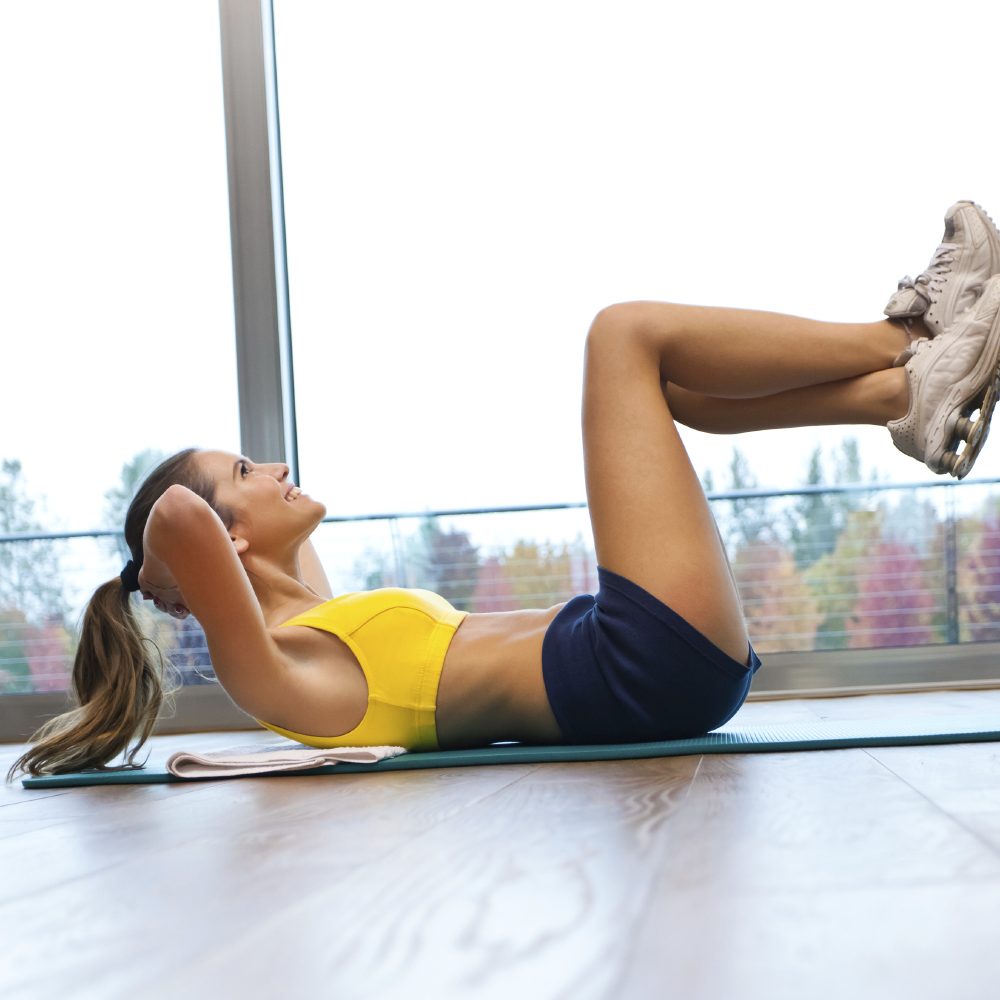
Do you have the correct form when it comes to exercise?
Precautions should always be taken when exercising as it can do significant damage to your muscles and joints, but what moves exactly are doing this?
Just because the body can perform certain exercises does not mean they're good for, so with the help of Greg we take a look at seven popular exercises, explain why they're bad for us and offer an alternative.
Greg Brookes (www.gbpersonaltraining.com), Trainer to the Trainers, says: "There seems to be an epidemic at the moment of people in gyms and parks on a mission to totally destroy their body."
First up, sit ups or crunches; posture is something that we all need to be aware of and for those who sit hunched in front of a computer all day at work the worst thing that can be done is crunching your body forward even more for a abs workout.
Greg advises: “Crunches and sit ups only perform 50% of the natural movement of the spine if you are performing them lying on the floor. If you are going to perform this exercise then at least crunch over a Stability Ball to get the full range of movement.”
To work your core stability muscles, the plank is a much safer option.
Greg advises that dips are not shoulder friendly, as they put your shoulder capsule under huge amounts of strain.
"Basically the arms are not designed to go backwards in that way. You can see this for yourself just by standing tall and then seeing how far you can take the arms backwards."
So if you’re looking on toning the shoulders regular push-ups or narrow push-ups are a lot safer as you’re not stretching your ligaments and the soft tissue of the shoulder joints like dips.
Behind the head lat pull downs, usually performed at the gym, are again very damaging to your shoulder joint. It is placed under external rotation and then the force is taken well below its natural range.
Greg suggests pull downs to the upper chest or even better chin ups as an alternative to this exercise.
The bench press is a popular exercise, and it’s not hard to figure out why. It adds muscle and strength to the chest and triceps, but safety must still be exercise.
The fitness expert suggests that there is a simple test to ensure you don’t take the barbell or dumbbells down too low.
Lie on the bench and use a wooden dowel or broomstick and see how deep you can naturally go. Most people find they cannot go as deep as the best; it is only the added weight of the bar that forces the shoulders into this position.
The simple test to check your natural range is the best way to ensure that you only go as deep as your shoulders will allow and not how deep the weight dictates.
Hamstring curls can put huge strain on both the knee joints and the lower back. A machine like this puts the body in a totally unnatural position and forces the joints to work in isolation.
Greg says: “Isolation exercises like this one also force the body to move through a dedicated pattern which in nature is something that the body will avoid to prevent overuse injuries.
“Deadlifts or single deadlifts are the safer alternative.”
Whilst the squat exercise has many incredible benefits, using the Smith Machine to squat can be detrimental to health. The Smith machine is a bar that is on runners that goes up and down along the same path vertically, but the vertical path does not mimic the natural path that we would take when performing a regular squat.
During the regular squat the upper body leans forwards off the vertical line to counterbalance the backwards movement of the hips.
The Smith machine not only compromises the movement but also encourages bad form of this crucial exercise.
Not only this, but it is also very difficult to drop down deep enough to engage the buttocks correctly, which results in a weird and unnatural movement.
Dumbbell squats or a barbell front squat are a safer alternative.
Finally, unprepared running. As you should know running can put a massive strain on the body.
Greg says: “Over 3 times the bodyweight goes through each leg during every stride. In order to absorb this kind of shock the body much have good alignment and core strength.
“The core stabilises the pelvis to provide a solid platform for the legs to operate under. Sadly most people have very weak core muscles due to inactivity and due to excess sitting most people also have bad joint alignment and stabilisation from head to toe.”
So it’s important that if you want to start running, losing excess weight through diet and bodyweight exercises to improve core strength and joint stability would be a safer starting point. Things like bodyweight circuits or hill walking intervals are a good option.
Tagged in exercise fitness tips

